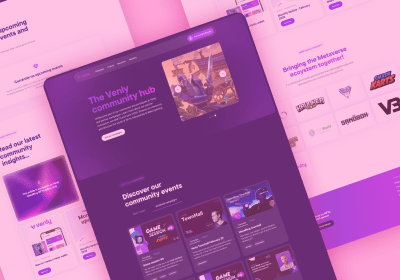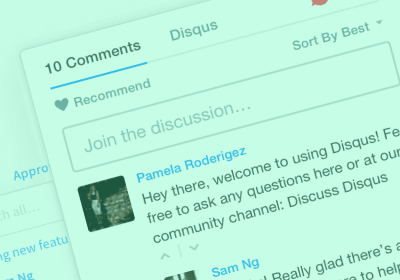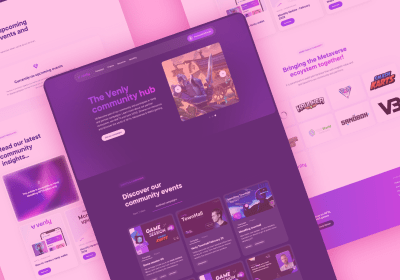
How atomic design supports a stellar design system

Delivering great projects faster is the key to success for web agencies today. So, the goal of a stellar web design system is to help them become more efficient. Atomic design fits into this work structure as a lean, modular, logical workflow. Those are some fun industry words, so let’s get into this concept some more...
An atomic design system focuses on constructive design for more creative fidelity and speed. In a design system, it also greatly improves collaborative work. Atomic web design helps teams work better together to produce amazing branded web experiences for clients. Web agencies can chase that “better, faster, cheaper” type of unicorn web development.
Why use atomic design in a web design system?

Atomic design keeps a project loyal to the client’s brand strategy online. It outlines a clear and accountable path to creative decisions. Teams can work better, with more confidence and predictability.
More consistency boosts confidence for web design agencies and their client brands. It also frees designers from applying subjective style choices and arbitrary design decisions. It saves the team from costly re-dos, and maximizes the team's limited resources. Subjective design is harder to justify with clients when it comes to the final product. So, the added clarity in atomic design sustains the client’s branded web content goals.
Atomic design is the roadmap inside a good design system. It establishes a swift web design process, a stronger agency team, and a more satisfied client.
The Atomic design advantage for web development agencies
At its core, atomic design creates a clearer working mindset for web designers. It's a simple method for designers to “zoom in and zoom out” of a project workflow view. Designers can zoom into smaller components and then zoom out for a global view of their pages. It builds a project with creative fidelity by paying attention first to individual components.
Web design agencies can gain a lot from atomic design. Building truer websites gets easier by adding consistency, speed, and flexibility:
Consistency - Simpler, step-based design patterns stay closer to project goals. Teams build up from small, individual components that stay consistent at every step.
Efficiency - Atomic design takes reusable web parts to build assembled systems faster. Designers share libraries of organized creative pieces that are easier to edit. The result is a leaner, speedier, and more responsive web design team.
Flexibility - Streamlined, modular work styles allow an agency to grow. Atomic design supports more flexible and scalable expansion opportunities for agencies. Over time, teams can take on more orders and more complex web design requests than before.
Atomic design implementation for web agency UI teams
Atomic design shapes the agency’s UI team work at the implementation stage. It fosters fluid collaboration with a shared inventory library and specific UI guidelines.
Here, atomic design becomes part of the process in an orderly, logical manner. UI teams work in a set of shared pattern libraries as the creative parts inventory. These libraries foster more efficient, predictable workflows with reusable components and design consistency. Atomic design pattern libraries house the UI teams’ “single source of truth” for design style of a project.
Principles of Atomic Design
Atomic design is a method inspired by the building blocks of chemistry. It asks web developers to consciously assemble the smallest patterns of components first. It’s a constructive method to design websites from the bottom-up, instead of in a linear way of thinking.
Typical website building focused first on a final design vision, or the overall end goal. Then, it would build the design from top to bottom. Web teams chose design attributes and components on the go. They would decide on items like type kit fonts, color palettes, animations, sections and layouts. Alas, designs risked becoming more subjective and incoherent this way.
With atomic design principles, web developers can envision designs in a logical hierarchy. It’s a more organized, constructive mindset going from smaller pieces to larger designs.
Starting with small elements, designers then systematically build larger groups of web design parts. They're creating high-fidelity systems of design components. Working this way from basic concepts to complex assemblies drives better purpose and logic inside the project.
Front end designer and guru Brad Frost shares his atomic design theory in five specific levels:

1. Atoms - As in nature, atoms represent the smallest parts of matter in design components. They’re the basic building blocks of all larger components. Atoms are the most abstract pieces, not very useful on their own.
Atoms serve as the basic design reference of a shared pattern library. Form labels, buttons, HTML tags, inputs, color palettes, fonts, and animations are all individual atoms. They build into larger, more complex elements depending how designers group them together.
2. Molecules - The next level above atoms is molecules. They are slightly more tangible web interface elements. Groups of atoms form molecules, and are the smallest functional unit of a design compound.
Molecules start to have their own properties. They become the functional base of a design system. For example, imagine some atoms like a form label, a button and an input field. They're not that useful on their own. Put them together though and they join as a useful molecule that performs a defined function.
3. Organisms - Further up the ladder, molecules join to form working organisms on a web interface. Organisms become groups of molecules working together. They form a more concrete and complex website section. It’s also where teams can start seeing the final design taking shape, section by section.
Organisms contain similar or different molecules based on function. Imagine a header organism: it can include a logo image, a navigation menu, a search form and some social links. Similarly, a sidebar organism can contain repeating article titles and thumbnail images.
At the organism level, atomic design pushes a team to think more strategically. This helps them create more portable pieces for reuse in other parts of the project.
4. Templates - Here, groups of organisms gather as templates to form the start of coherent pages. A logical design layout with purpose becomes more evident.
Templates add clarity and context to all the arranged molecules and organisms. They echo the project’s creative goal and give clients a preview of their final design.
5. Pages - Final designs replace placeholders inside templates to form actual project pages. These pages show real user experience designs. They also showcase the highest level of creative fidelity.
As the most tangible assembly level, most of the creative reviews take place at the pages stage. It’s also the best time for testing its design system functions and effectiveness.
Rich page context helps designers better edit and update molecules, organisms and templates. Pages also prove how variable items will look and function. Things like a text block with more or less characters, or a shopping cart list with 1 or 10 items. Designers can use pages as a feedback loop to adjust any elements needed here.
Atomic design supports great design systems for agencies
A design system lets competitive agencies handle added work to grow more profitably. Design systems organize web design companies as highly collaborative web development teams.

Atomic design further simplifies this creative web process for everyone. It clearly supports successful design systems for agencies and web design companies. The benefits are effective teams, more confident designs, and happier clients.
To learn more about a design system, get in touch with our SiteManager team today. We can provide more information on how adding a new, stellar web design system could work for your team. We can also consult on how to best apply key aspects of atomic design into your new design system workflow. We look forward to speaking with you soon!
Start building today
Streamline your creative process and keep your team aligned with our collaboration tool.




